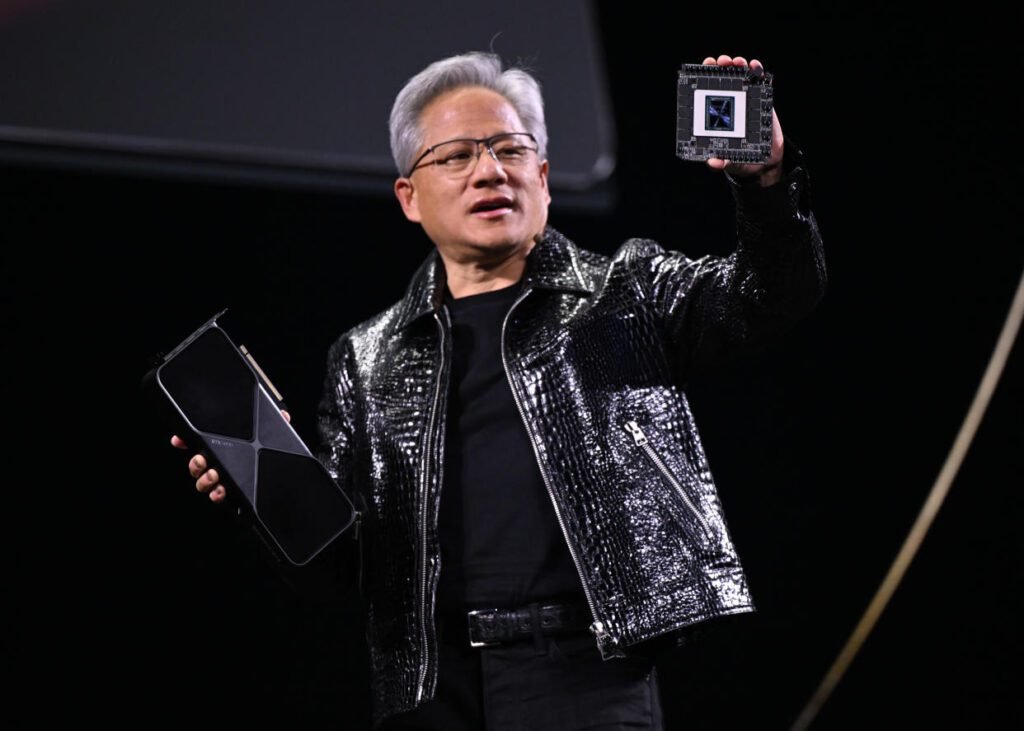Have you ever wondered what drives the cutting-edge innovations behind your favorite video games, self-driving cars, and artificial intelligence breakthroughs? If so, you’re not alone. Every year, technology enthusiasts and industry experts alike eagerly await the latest nvidia keynote—a stage where NVIDIA, one of the world’s leading technology companies, unveils transformative innovations that shape our digital future. In this post, we’re going to take an in-depth look at what the nvidia keynote is, its historical evolution, its impact on technology and various industries, and actionable strategies for making the most out of these events.
By the end of this post, you’ll understand:
- What a nvidia keynote is and why it’s a critical event in the tech calendar.
- Historical context and evolution: How NVIDIA has transformed from a graphics chip manufacturer to a trailblazer in AI, gaming, automotive tech, and more.
- Key themes and innovations presented in recent keynotes, supported by real-world examples and case studies.
- Practical applications and actionable tips on leveraging the insights from these keynotes for career development, business strategies, and technology investments.
- Answers to frequently asked questions that demystify common misconceptions and provide clarity about the event.
Whether you’re an industry insider, a tech enthusiast, or someone looking to better understand how these keynote presentations influence our digital lives, this comprehensive guide is your gateway to the world of the nvidia keynote.
What is a nvidia keynote?
At its core, a nvidia keynote is a high-profile presentation hosted by NVIDIA, a company renowned for its groundbreaking advancements in graphics processing, artificial intelligence (AI), and high-performance computing. These keynote events serve several purposes:
- Showcasing Innovation: NVIDIA uses the keynote to unveil its latest products, technologies, and research initiatives. These presentations often feature new graphics cards, advancements in AI hardware, and breakthroughs in computing that push the boundaries of what’s possible.
- Industry Influence: The keynote acts as a platform where NVIDIA not only introduces new products but also sets trends and offers insights into future technology landscapes.
- Engaging the Community: From gamers and developers to researchers and business leaders, the keynote is designed to engage a broad audience, sparking conversations around innovation and the future of technology.
A Brief Historical Overview
The journey of the nvidia keynote is intertwined with the evolution of NVIDIA itself. Founded in 1993, NVIDIA initially focused on creating high-performance graphics processing units (GPUs) for the gaming industry. However, over the decades, the company has expanded its horizons into AI, data centers, and automotive solutions.
- Early Days: In the 1990s and early 2000s, NVIDIA’s keynote events primarily highlighted their pioneering work in graphics technology, laying the groundwork for a revolution in PC gaming and multimedia applications.
- Diversification and Expansion: As the company grew, the nvidia keynote began to feature a broader spectrum of innovations, including advancements in AI and deep learning—a field that NVIDIA has been instrumental in shaping.
- Modern Era: Today’s keynotes are grand affairs that not only showcase new hardware and software but also provide strategic insights into how emerging technologies will reshape industries worldwide.
For more on NVIDIA’s history and its evolution, you can visit the NVIDIA Official Website.
The Evolution of the nvidia keynote
From Graphics to AI and Beyond
NVIDIA’s journey from a graphics chip company to a diversified tech leader is one of transformation and foresight. Early keynotes focused on hardware breakthroughs that revolutionized the gaming industry by delivering unparalleled graphics quality and performance. However, as computing demands evolved, so did NVIDIA’s presentations.
Key Milestones in NVIDIA’s Journey
1990s: The Birth of the GPU Era
NVIDIA introduced GPUs that not only enhanced gaming experiences but also paved the way for new forms of digital content creation. The keynotes during this era were modest but set a strong foundation for the company’s future endeavors.2000s: Expanding Horizons
As demand for high-definition graphics grew, NVIDIA began integrating more advanced technologies into its products. Keynotes started highlighting how GPUs could handle complex rendering tasks, contributing to the emergence of high-quality visual effects in films and video games.2010s: The AI Revolution
With the advent of machine learning and AI, NVIDIA recognized the potential of its hardware in accelerating complex computations. The nvidia keynote evolved to emphasize not just gaming, but also AI research, data science, and autonomous vehicles. This period marked a paradigm shift where NVIDIA positioned itself as a leader in AI infrastructure.2020s: A Future-Ready Vision
Today, the nvidia keynote covers a vast array of topics—from AI and deep learning to edge computing and beyond. The presentations are larger than ever, often featuring live demos, interactive sessions, and visionary talks by industry leaders. NVIDIA’s innovations now underpin technologies that influence sectors as diverse as healthcare, automotive, and entertainment.
The Format and Experience
NVIDIA’s keynotes are more than just slide presentations. They are dynamic experiences designed to captivate and educate:
- Live Demos: Demonstrations of new products in action, such as real-time ray tracing in gaming or AI-powered applications in healthcare.
- Expert Panels: Sessions featuring NVIDIA engineers, industry experts, and partner companies discussing the implications of new technologies.
- Interactive Q&A: Opportunities for the audience to ask questions, providing clarity and deeper insights into the topics discussed.
- Multimedia Integration: High-quality videos, animations, and infographics that make complex technical details accessible and engaging.
These elements combine to create an event that is both informative and inspiring, encouraging audiences to explore new frontiers in technology.
Key Themes and Innovations from Recent nvidia keynotes
Over the years, several recurring themes have emerged from NVIDIA’s keynote presentations. Let’s dive into some of these themes and explore how they are shaping our digital future.
1. Artificial Intelligence and Deep Learning
One of the most prominent themes in recent NVIDIA keynotes is the focus on AI and deep learning. NVIDIA’s hardware accelerates complex neural network computations, making breakthroughs in AI possible.
Highlights:
- GPU-Accelerated AI: NVIDIA’s GPUs are designed to handle parallel processing, which is essential for training deep neural networks efficiently.
- Real-World Applications: From autonomous vehicles to medical imaging, AI-powered solutions are transforming industries.
- Software Ecosystem: NVIDIA supports its hardware with robust software frameworks like CUDA, cuDNN, and TensorRT, enabling developers to create sophisticated AI models.
Case Study:
Autonomous Vehicles
NVIDIA’s DRIVE platform, often highlighted during keynotes, is a comprehensive solution for developing self-driving cars. By leveraging GPU acceleration and AI, manufacturers are able to process vast amounts of sensor data in real time, enhancing both safety and performance on the road.
2. Ray Tracing and Real-Time Rendering
NVIDIA’s advancements in ray tracing technology have redefined the gaming and entertainment landscapes. Ray tracing simulates the behavior of light, resulting in more realistic visuals and immersive experiences.
Highlights:
- Enhanced Visual Fidelity: Ray tracing technology provides lifelike lighting, shadows, and reflections, elevating the realism in video games and simulations.
- Gaming Innovation: Popular game titles now feature ray tracing to deliver breathtaking visual effects, setting new standards for the industry.
- Creative Applications: Beyond gaming, ray tracing is used in fields like architecture and film production for creating realistic renderings.
Example:
Video Game Graphics
During recent keynotes, NVIDIA demonstrated how real-time ray tracing can transform game environments by providing unparalleled detail and visual richness. This innovation has not only captivated gamers but also opened up new creative possibilities for developers.
3. High-Performance Computing (HPC) and Data Centers
NVIDIA’s GPUs are not only pivotal for gaming and AI but also play a crucial role in high-performance computing. In recent keynotes, the company has spotlighted its contributions to scientific research, financial modeling, and data analytics.
Highlights:
- Speed and Efficiency: NVIDIA GPUs accelerate data processing tasks, making it possible to handle large-scale computations quickly and efficiently.
- Broad Applications: HPC powered by NVIDIA is used in weather forecasting, climate research, and large-scale simulations that drive scientific discovery.
- Data Center Solutions: NVIDIA’s data center products, such as the Tesla and A100 series, are at the forefront of supporting cloud computing and enterprise-level applications.
Practical Application:
Scientific Research
Researchers rely on NVIDIA’s HPC solutions to run complex simulations that were previously impossible due to computational constraints. For instance, climate scientists now model weather patterns with greater accuracy, leading to better predictions and more informed decision-making.
4. The Convergence of Gaming and Professional Visualization
NVIDIA keynotes have consistently emphasized the overlap between gaming and professional visualization. The same technologies that enhance game graphics are also revolutionizing industries like film, design, and virtual reality (VR).
Highlights:
- Dual Impact: Innovations such as ray tracing and AI not only improve game visuals but also enable more sophisticated professional design tools.
- VR and AR: Virtual reality and augmented reality applications benefit from NVIDIA’s advancements, creating more immersive and interactive experiences.
- Creative Workflows: Professionals in creative industries are leveraging NVIDIA’s technology to streamline workflows, from 3D modeling to real-time rendering.
Example:
Architectural Design
Architects and designers use NVIDIA-powered visualization tools to create and manipulate 3D models in real time. This not only speeds up the design process but also allows for a more interactive and iterative approach to creating spaces.
5. The Future of Edge Computing
In addition to data centers, NVIDIA has been a pioneer in edge computing, which involves processing data closer to the source rather than in a centralized cloud. This approach is crucial for applications that require minimal latency, such as autonomous driving and smart cities.
Highlights:
- Real-Time Processing: Edge computing enables faster data processing and decision-making, which is vital in time-sensitive applications.
- Scalability: NVIDIA’s edge computing solutions are designed to be scalable, supporting a wide range of devices and environments.
- Integration with AI: The combination of edge computing and AI allows for advanced analytics and real-time insights directly at the source.
Case Study:
Smart Cities
By integrating NVIDIA’s edge computing technology, municipalities can deploy smart traffic management systems that analyze live data from sensors and cameras. This leads to more efficient traffic flow, reduced congestion, and improved urban planning.
Practical Applications and Strategies for Leveraging the nvidia keynote
Attending or following an NVIDIA keynote can be incredibly beneficial, whether you’re an industry professional, a developer, or simply a tech enthusiast. Here are some actionable tips and best practices for maximizing the value of these events.
1. Preparing for the Event
Research Ahead:
- Study Past Keynotes: Familiarize yourself with previous NVIDIA keynotes to understand recurring themes and the evolution of the company’s technology. NVIDIA’s Press Room is a great resource for this.
- Know the Agenda: Most keynotes are released with a detailed agenda. Reviewing it in advance will help you identify sessions or product demos that are most relevant to your interests.
Set Clear Goals:
- Define Your Objectives: Are you looking to gain insights for your business, learn about new technologies, or network with industry professionals? Having clear objectives can help you focus on the most pertinent content.
- Make a List of Questions: Prepare a list of questions you hope to see answered during the keynote. This proactive approach will ensure you get the most out of the event.
2. During the Keynote
Stay Engaged:
- Take Notes: Whether you’re attending in person or watching online, jot down key points, statistics, and ideas that resonate with you. This will be invaluable for post-event reflection.
- Participate Actively: Engage with live polls, Q&A sessions, and social media discussions. This not only enhances your understanding but also connects you with a community of like-minded individuals.
- Follow Along on Multiple Devices: Use a second device to monitor real-time updates, supplementary content, or social media reactions to enrich your experience.
Utilize Resources:
- Download Presentation Materials: Many keynotes offer downloadable content such as slide decks or white papers. These materials can serve as a reference long after the event.
- Explore Related Content: NVIDIA often provides links to additional resources, such as detailed product pages or technical documentation. Make use of these links to deepen your understanding of the topics discussed.
3. Post-Keynote Actions
Reflect and Share:
- Review Your Notes: Soon after the event, review your notes and highlight the most significant takeaways. Consider writing a summary or sharing insights on your blog or social media.
- Implement Learnings: Identify how the innovations and strategies presented at the keynote can be applied to your own projects or business practices. For instance, if you’re a developer, explore how integrating CUDA or AI frameworks into your applications could yield performance improvements.
Network and Follow Up:
- Join Online Forums: Engage with communities on platforms like Reddit, LinkedIn, or specialized NVIDIA forums to discuss the keynote and its implications.
- Reach Out to Speakers: If possible, connect with the keynote speakers on professional networks. They often share additional insights and resources beyond the event.
Actionable Tip:
Create a “post-keynote action plan” that outlines the steps you will take to implement new ideas or technologies in your work. This plan could include setting up internal training sessions, experimenting with new software tools, or re-evaluating your technology investments.
Real-World Examples and Case Studies
The announcements and innovations unveiled during NVIDIA keynotes have far-reaching impacts. Here are some real-world examples that illustrate how these breakthroughs are making a difference.
Case Study 1: Revolutionizing Game Development
Scenario:
A mid-sized game development studio was facing challenges in achieving the visual fidelity required by modern gamers. The studio decided to invest in NVIDIA’s latest GPU technology, as highlighted in a recent nvidia keynote, which emphasized real-time ray tracing and advanced AI-driven rendering.
Solution:
- Adoption of New GPUs: The studio upgraded to NVIDIA’s latest GPUs, which provided improved rendering performance and realistic lighting effects.
- Integration of AI Tools: Using NVIDIA’s AI frameworks, the studio implemented advanced texture generation techniques, reducing development time while enhancing visual quality.
- Results:
- Enhanced Visuals: The new graphics technology resulted in visually stunning environments that received high praise from both gamers and critics.
- Increased Efficiency: The AI-driven tools helped streamline the development process, allowing the studio to bring their game to market faster.
Case Study 2: Advancing Autonomous Vehicle Technology
Scenario:
An automotive company looking to innovate in the field of autonomous driving leveraged insights from a recent nvidia keynote focused on AI and edge computing.
Solution:
- Implementation of NVIDIA DRIVE: The company integrated NVIDIA’s DRIVE platform, which was showcased as part of the company’s vision for the future of transportation.
- Real-Time Data Processing: The platform enabled the vehicle’s onboard systems to process sensor data in real time, a critical component for safe autonomous driving.
- Results:
- Improved Safety: Enhanced processing capabilities led to quicker decision-making, contributing to safer autonomous driving features.
- Market Differentiation: The company was able to position itself as an innovator in the competitive automotive market, leveraging the advancements highlighted in the nvidia keynote.
Case Study 3: Transforming Healthcare with AI
Scenario:
A healthcare research institute sought to improve diagnostic accuracy using advanced AI models. After attending an NVIDIA keynote focusing on GPU-accelerated deep learning, the institute decided to incorporate NVIDIA technology into its research workflow.
Solution:
- Adoption of NVIDIA GPUs: The institute upgraded its computing infrastructure to include NVIDIA GPUs, which provided the computational power needed to train complex AI models.
- Integration of AI Frameworks: By leveraging tools like CUDA and TensorRT, the research team developed models capable of analyzing medical images with unprecedented accuracy.
- Results:
- Enhanced Diagnostics: The new AI models significantly improved the accuracy of disease detection, leading to earlier diagnoses and better patient outcomes.
- Research Breakthroughs: The institute was able to publish several influential studies, solidifying its reputation as a leader in AI-driven healthcare research.
Future Trends Inspired by the nvidia keynote
As we look ahead, the themes and innovations presented in recent NVIDIA keynotes offer a glimpse into what the future of technology might hold. Here are some key trends that are likely to shape the next decade:
1. Ubiquitous AI Integration
- Everyday Applications: AI is moving beyond niche applications to become a core component of everyday technology—from smart home devices to personalized healthcare.
- Industry Transformation: Sectors such as finance, education, and manufacturing will increasingly adopt AI-powered solutions, driven by the advancements highlighted in the nvidia keynote.
2. Enhanced Virtual and Augmented Reality
- Immersive Experiences: With improvements in real-time rendering and graphics, VR and AR will offer more immersive experiences, impacting gaming, remote work, and online education.
- Cross-Industry Collaboration: Creative professionals across industries will leverage these technologies to design interactive experiences that were once thought impossible.
3. Expansion of Edge Computing
- Low-Latency Solutions: As more devices connect to the internet, edge computing will play a crucial role in providing real-time data processing, essential for applications like autonomous vehicles and smart city infrastructure.
- Decentralized Computing Models: The continued development of edge computing platforms, as seen in NVIDIA’s latest announcements, will pave the way for more decentralized and efficient computing networks.
4. Continued Evolution of Graphics and Visualization
- Next-Level Gaming: The gaming industry will continue to push the envelope, using advancements such as ray tracing to deliver unparalleled visual experiences.
- Professional Tools: Industries like architecture, design, and film will benefit from even more sophisticated visualization tools, enabling creative professionals to work faster and more accurately.
5. Integration of Quantum and Classical Computing
- Hybrid Solutions: While still in the early stages, the convergence of quantum computing with classical high-performance computing—augmented by NVIDIA’s GPU advancements—could revolutionize problem-solving in fields like cryptography, complex simulations, and materials science.
Frequently Asked Questions (FAQ)
Q1: What exactly is a nvidia keynote?
A: A nvidia keynote is a high-profile event where NVIDIA presents its latest innovations, technologies, and strategic visions. These keynotes cover a range of topics, including advancements in GPU technology, artificial intelligence, high-performance computing, and more.
Q2: Who typically attends NVIDIA keynotes?
A: The audience is diverse, including technology enthusiasts, industry professionals, developers, researchers, gamers, and business leaders. The content is designed to be relevant for anyone interested in the future of technology.
Q3: How can I watch a nvidia keynote if I can’t attend in person?
A: NVIDIA typically streams its keynotes online, and recordings are often available on platforms like YouTube and the NVIDIA website. This makes it accessible to a global audience.
Q4: Why are NVIDIA keynotes so influential in the tech industry?
A: NVIDIA is a leader in multiple technology sectors—graphics, AI, data centers, and automotive tech. Their keynotes not only unveil groundbreaking products but also set industry trends and offer insights into future technological directions.
Q5: How can I leverage the insights from a nvidia keynote in my career or business?
A: Here are a few actionable strategies:
- Stay Informed: Follow the keynotes and read detailed analyses to understand emerging trends.
- Network: Connect with other professionals who share your interests through online communities.
- Implement New Tools: Evaluate whether adopting NVIDIA’s new technologies (such as AI frameworks or GPU solutions) can enhance your projects or business operations.
Q6: What resources are available to further explore the topics discussed during the keynote?
A: NVIDIA provides a wealth of resources including technical documentation, white papers, and case studies on their Developer Zone. Additionally, reputable tech sites like TechCrunch and The Verge offer insightful analyses.
Conclusion
The nvidia keynote is much more than a product launch event—it is a window into the future of technology. From groundbreaking advancements in artificial intelligence and real-time rendering to transformative impacts on industries ranging from gaming to healthcare, NVIDIA’s presentations consistently push the envelope and inspire innovation.
In this post, we’ve explored:
- What a nvidia keynote is: An influential event showcasing NVIDIA’s latest innovations.
- Historical evolution: How NVIDIA has evolved from a graphics chip pioneer to a leader in AI, HPC, and beyond.
- Key themes and innovations: Detailed insights into AI, ray tracing, HPC, and edge computing.
- Real-world applications and case studies: Practical examples of how NVIDIA’s technologies are reshaping industries.
- Actionable strategies: Tips for preparing for, engaging with, and capitalizing on the insights from NVIDIA keynotes.
- Future trends: A look at what emerging technologies might mean for our future.
- FAQ: Addressing common questions and misconceptions.
As technology continues to evolve at breakneck speed, staying updated with events like the nvidia keynote can provide you with valuable insights and a competitive edge in your professional or personal pursuits.
Call-to-Action
Are you ready to dive deeper into the innovations that are shaping our future? Subscribe to our newsletter, share this post with fellow tech enthusiasts, and join the conversation on social media. Whether you’re an industry insider or a curious newcomer, there’s always something new to learn from the nvidia keynote.
For more in-depth analyses and updates on the latest technological trends, check out our related posts and visit reputable sources like NVIDIA’s Official Blog and Ars Technica. Your journey into the future of technology starts now!




